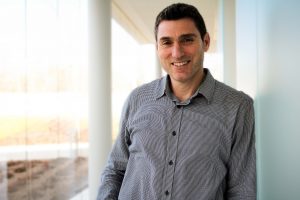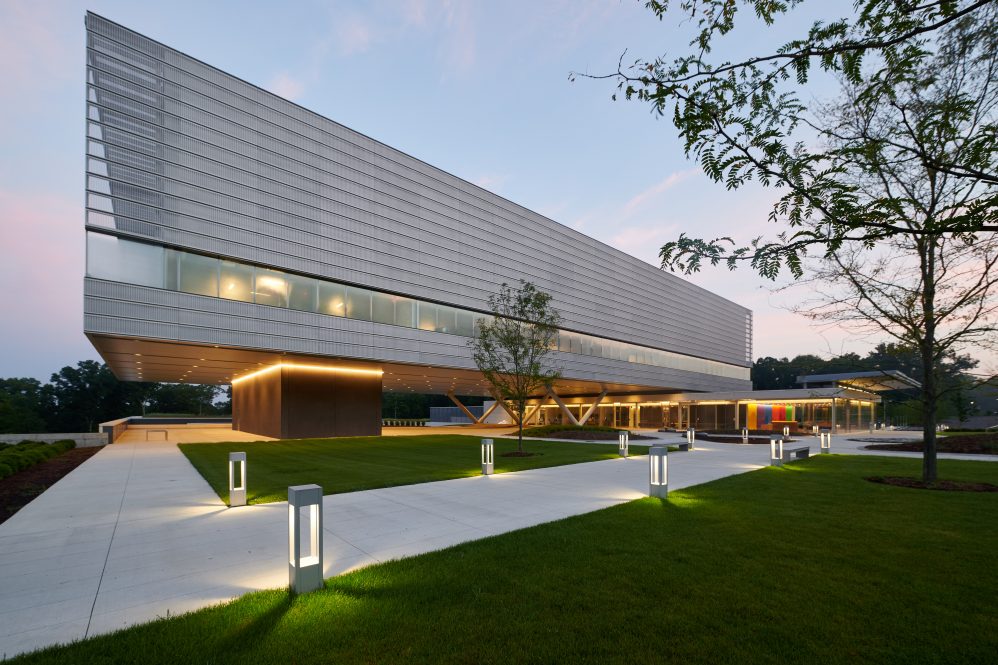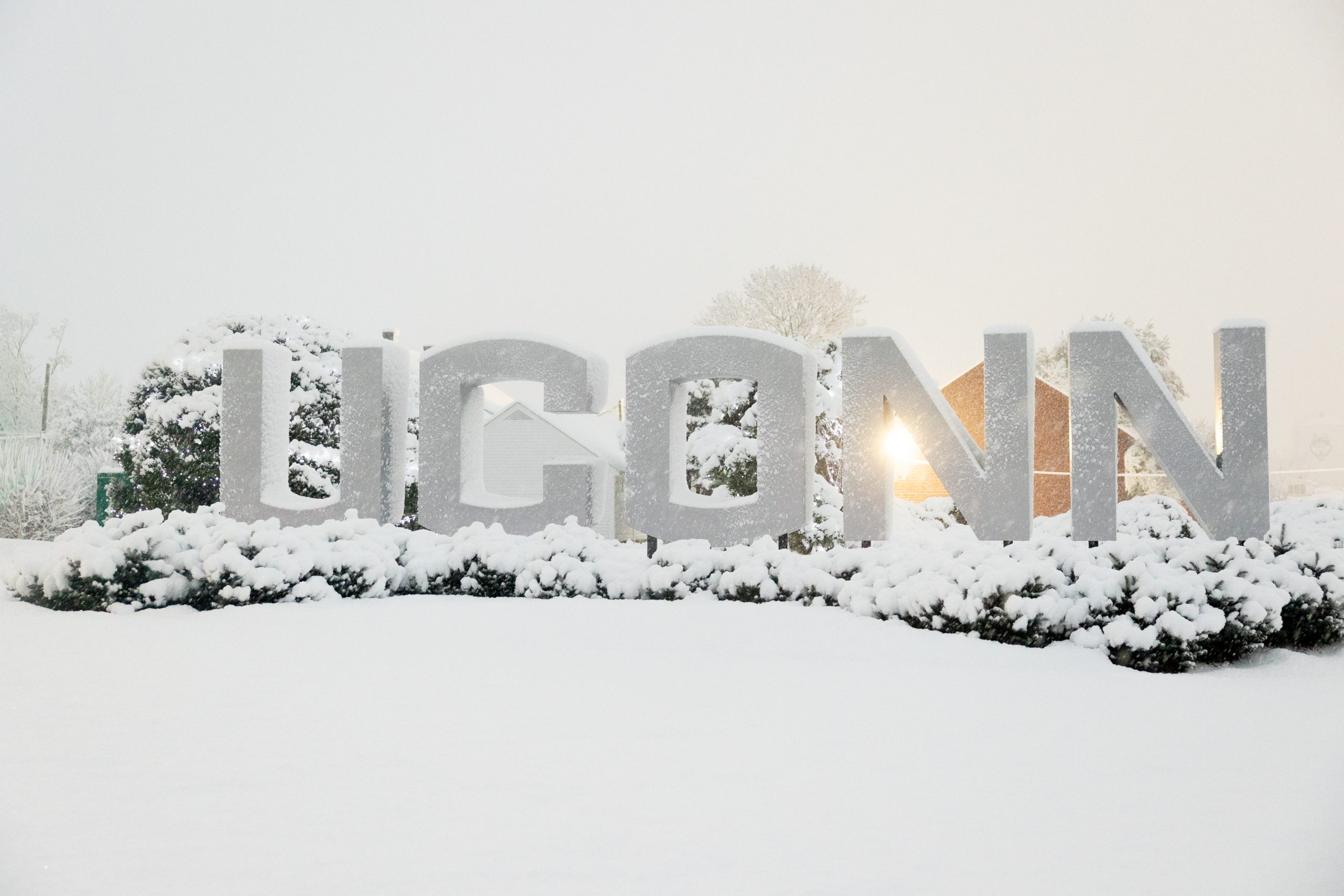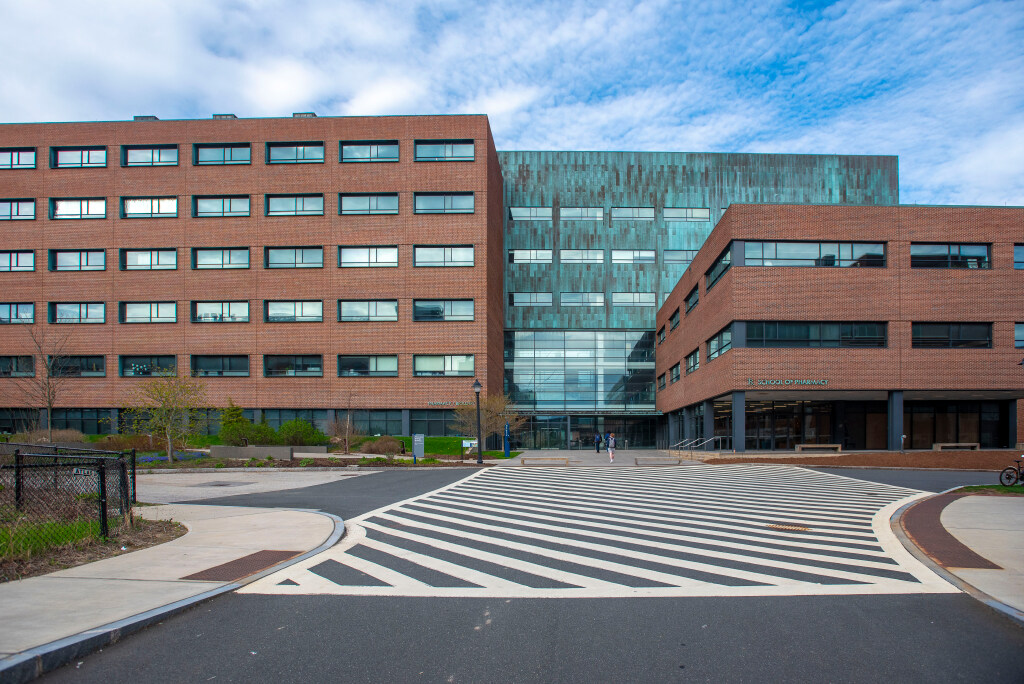Emmanouil “Manos” Anagnostou has overseen tremendous success since his interim appointment as executive director of the Innovation Partnership Building at UConn Tech Park. The IPB has established itself as the University’s hub for cutting-edge research and technology, all while forging lucrative collaborations with industry leaders that expand knowledge of climate, clean energy, national security, and more.
In September, UConn rewarded Anagnostou’s efforts by naming him as the permanent executive director of the IPB. He had served as interim since the former executive director, Pamir Alpay, began serving as the Vice President for Research, Innovation, and Entrepreneurship.

“UConn has become synonymous with our research collaborations with many of Connecticut’s top companies and industries,” says Alpay. “The IPB is critical to our research and innovation success, and Dr. Anagnostou has expertly expanded our partnerships to the benefit of our faculty and state.”
Dean of the College of Engineering JC Zhao likewise praised the appointment. Several engineering faculty members conduct research in the IPB’s centers and institutes and Anagnostou served as an associate dean of the COE until his recent promotion.
“This position is a testament to his expertise and commitment to building strategic industry partnerships and addressing our UConn’s mission to support our state’s economic development in critical areas including manufacturing, defense, sustainability, and clean energy,” says Zhao.
Advancing the IPB
For Anagnostou, his interim achievements are a prelude to loftier goals.
“The IPB is an amazing facility, and as director, I want to maximize our capacity for our strategic initiatives. We’re hitting the nail on the head with research expenditures, but we’re still a fraction of the University’s strategic goal of $500 million per year,” Anagnostou says. “We need more ideas, and we are working to identify areas that IPB can support, such as chemistry, health care, and AI, where we can make an impact.”
Security partnerships, such as with the National Institute for Undersea Technology and the Air Force Research Labs, account for much of the IPB’s funding. Additionally, partnerships with state industrial and scientific leaders like Pratt & Whitney and Eversource financially support advanced centers and institutes within the Tech Park.
The executive director values those partnerships and sees their influence in establishing similar opportunities for small and medium-sized businesses. He seeks to provide resources to manufacturers and help start-ups pursue their own technology and ideas.
“The IPB has been very well known for our support from defense projects. That is our signature, but I feel that the IPB can be more than that,” Anagnostou says.
To do so, he hopes to establish a clean energy test bed facility in the building, allowing partners to integrate sustainable technology and simulate scenarios that challenge grid resiliency. The test bed would complement another major clean energy and sustainability endeavor that has already begun at the IPB, with Anagnostou leading the effort.
FuelCell Energy has already installed two 250-kilowatt solid oxide cells. The second phase will bring the total capacity to 1 megawatt of power. The units will be configured to operate in a combined heat and power mode, allowing the University to integrate thermal energy recovery into an existing system within the IPB.
The Center for Clean Energy Engineering (C2E2), which is already fully powered by fuel cells, is relocating from the Depot Campus to the IPB. Anagnostou says there is a strategic advantage to bringing everything together under one roof, with hydrogen produced through fuel cell and solar sources.
“This would be a perfect setting, operating on zero-carbon energy and where students can study and apply new techniques to systems,” he says.
Eventually, UConn would establish an additional interdisciplinary sustainability research center to further anchor the Tech Park as the hub for the University’s Renewable Energy Corridor on the north side of campus.
Looking Beyond the Tech Park
To better serve Connecticut’s industry needs, Anagnostou says the IPB must extend from UConn-Storrs to the different research communities throughout the state. He sees regional campuses as key to that effort, such as establishing a presence at Avery Point for blue tech and offshore wind power research and Stamford to further efforts in areas such as AI and fintech. Hartford would provide an opportunity for UConn to plan climate change mitigation and energy efficiency in urban populations.
“The industry needs that support, and we can make that happen,” Anagnostou says. “The University is not just in Storrs. Regional campuses are where the businesses are and they play an important role in linking UConn to local industry.”
The IPB has brought more major companies into the fray, such international tech giant ASSA ABLOY, which has a large door security manufacturing location in New Haven. UConn and ASSA ABLOY are moving forward with a research partnership into sustainability initiatives. Anagnostou sees the partnership as a sign that the University is ready for more large-scale collaborations with major Connecticut companies.
“A director’s job is to orchestrate, but you need to have very good violins playing in your symphony,” Anagnostou says. “I am ready to orchestrate on some major funding opportunities by creating synergy and collaborations with Connecticut industries.”



